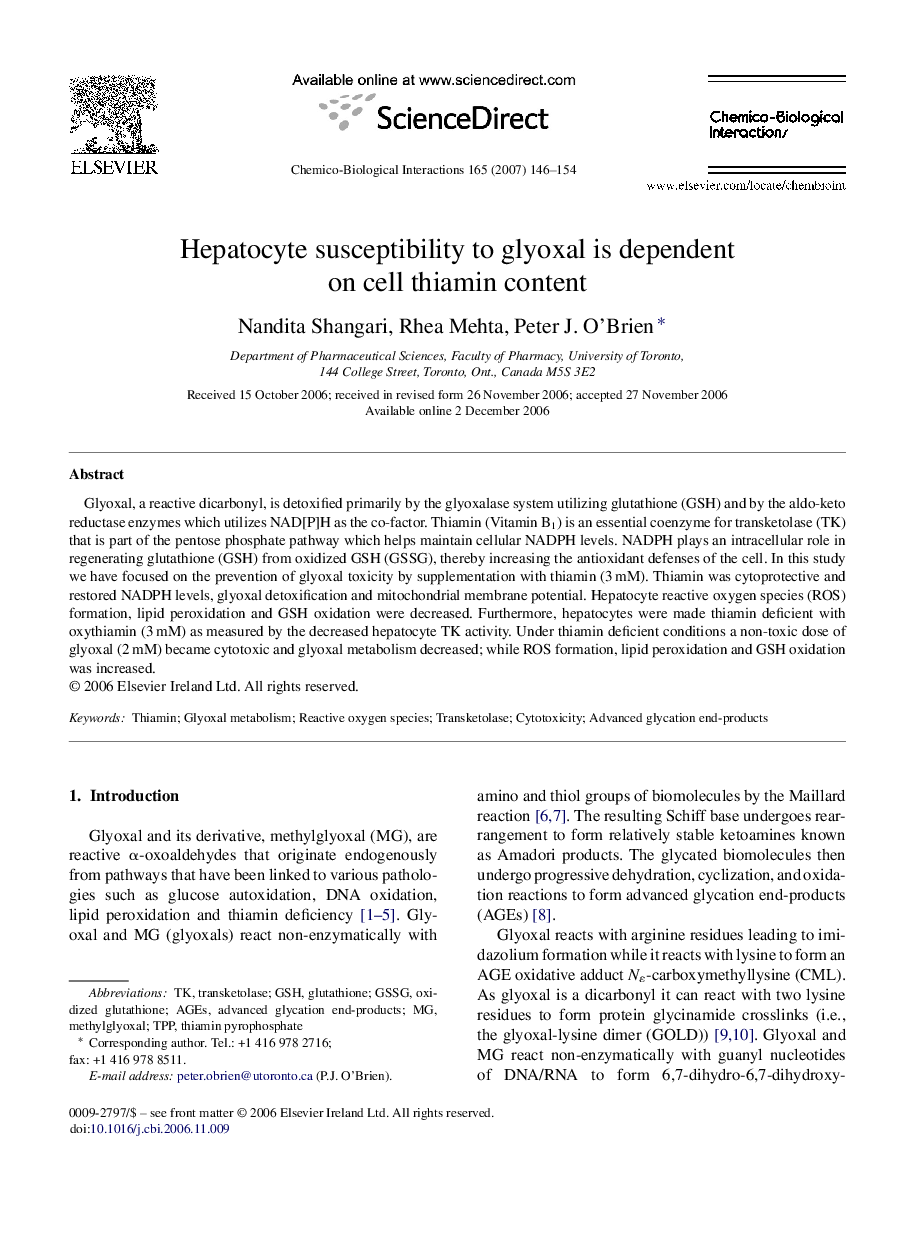| کد مقاله | کد نشریه | سال انتشار | مقاله انگلیسی | نسخه تمام متن |
|---|---|---|---|---|
| 2582167 | 1130224 | 2007 | 9 صفحه PDF | دانلود رایگان |

Glyoxal, a reactive dicarbonyl, is detoxified primarily by the glyoxalase system utilizing glutathione (GSH) and by the aldo-keto reductase enzymes which utilizes NAD[P]H as the co-factor. Thiamin (Vitamin B1) is an essential coenzyme for transketolase (TK) that is part of the pentose phosphate pathway which helps maintain cellular NADPH levels. NADPH plays an intracellular role in regenerating glutathione (GSH) from oxidized GSH (GSSG), thereby increasing the antioxidant defenses of the cell. In this study we have focused on the prevention of glyoxal toxicity by supplementation with thiamin (3 mM). Thiamin was cytoprotective and restored NADPH levels, glyoxal detoxification and mitochondrial membrane potential. Hepatocyte reactive oxygen species (ROS) formation, lipid peroxidation and GSH oxidation were decreased. Furthermore, hepatocytes were made thiamin deficient with oxythiamin (3 mM) as measured by the decreased hepatocyte TK activity. Under thiamin deficient conditions a non-toxic dose of glyoxal (2 mM) became cytotoxic and glyoxal metabolism decreased; while ROS formation, lipid peroxidation and GSH oxidation was increased.
Journal: Chemico-Biological Interactions - Volume 165, Issue 2, 30 January 2007, Pages 146–154